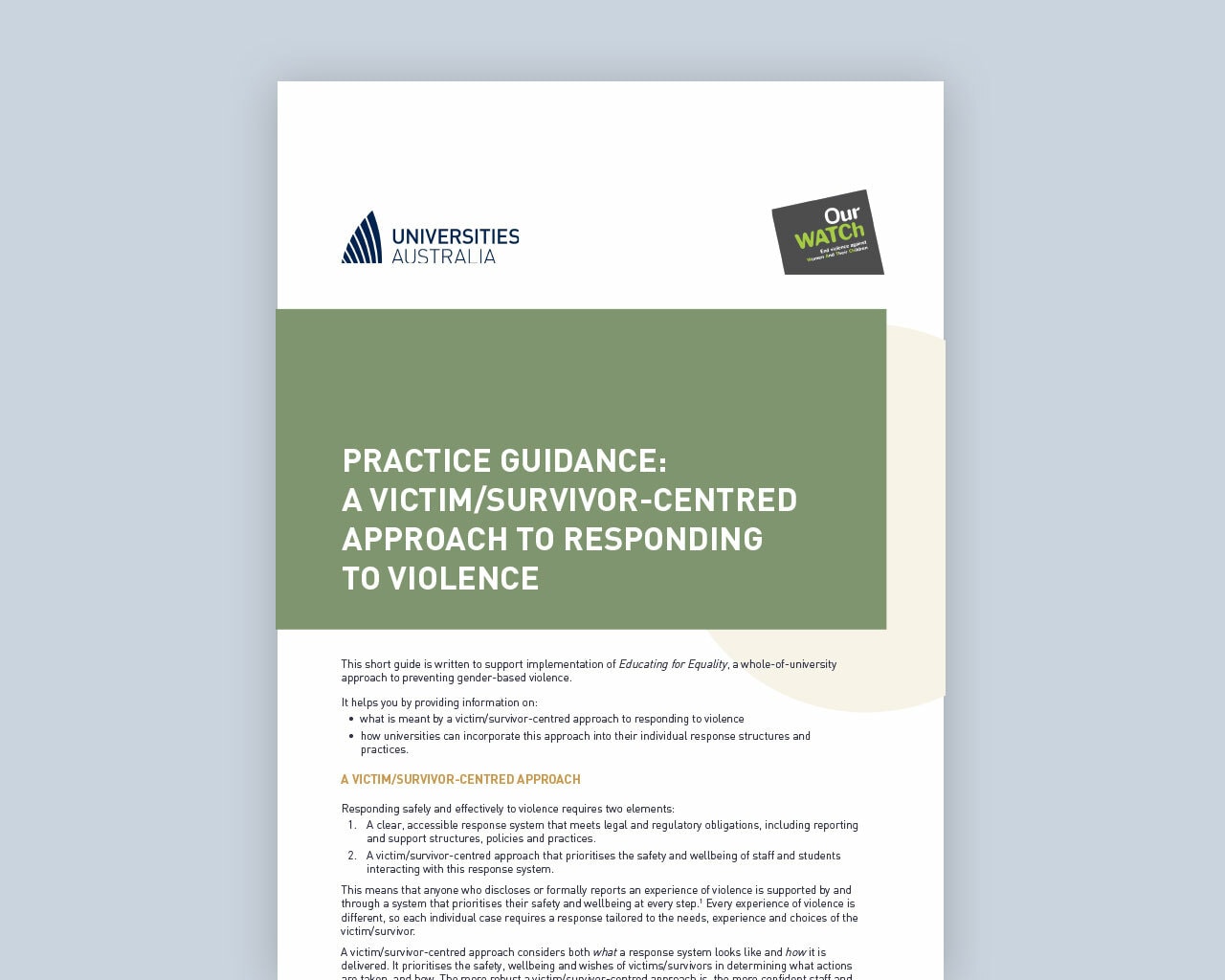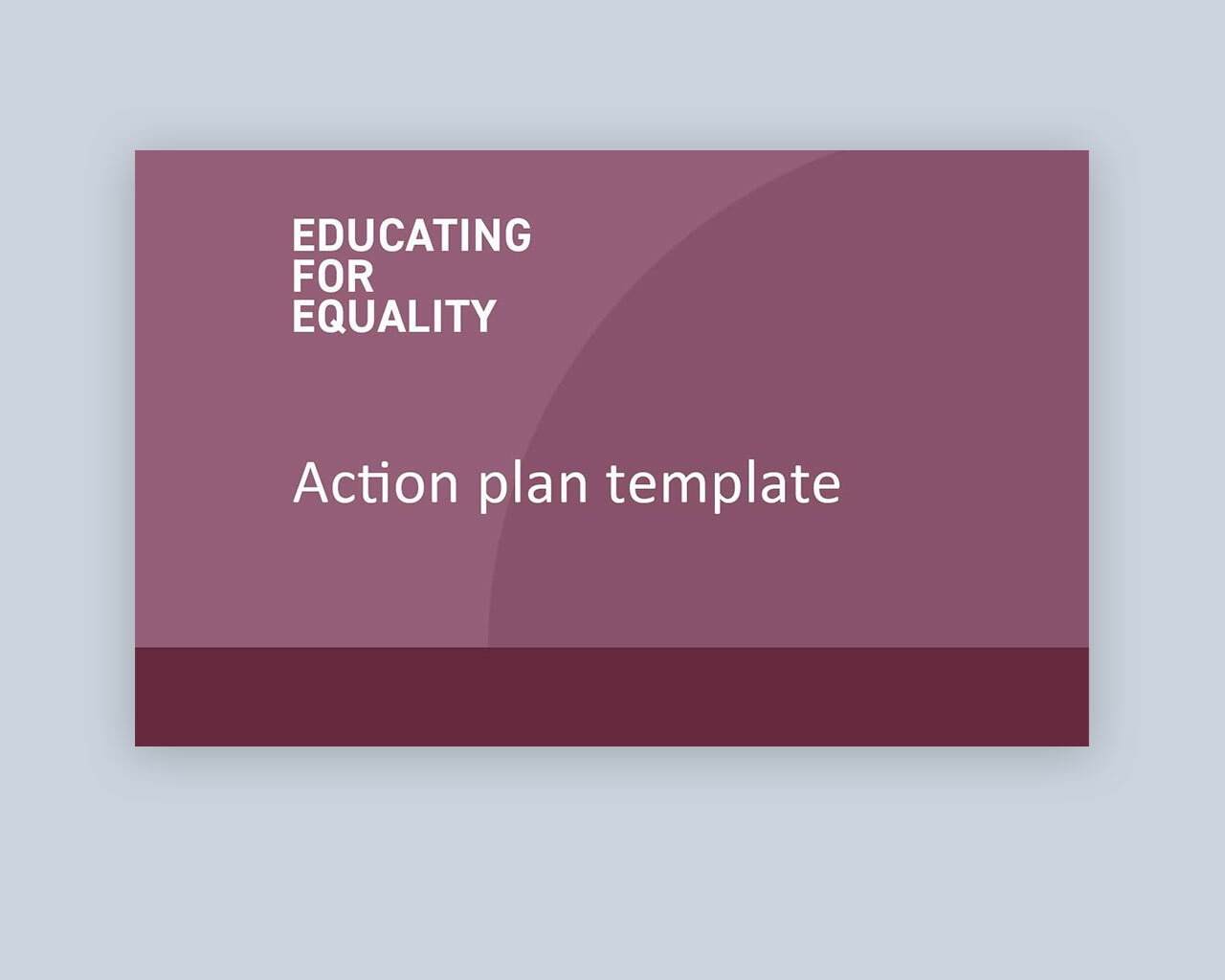On this page
Every university is different. The following implementation steps and tools are flexible and adaptive so you can choose actions that are appropriate for your institution.
Step 1: Prepare
Secure the support and commitment of senior leaders
The involvement of senior leaders is key to the success of a whole-of-university approach. Leaders create the authorising environment for the work to take place through their public commitment, strategic input, and allocation of resources.
Leaders need to be engaged from the start and continue to promote and drive this work as it evolves.
Tools and resources for this step

Key messages

A victim-centered approach to responding to violence
Step 2: Take stock
Map existing work and data and a university self-assessment
Educating for Equality is not intended to replace or duplicate existing work. Rather, it aims to bring together work across the university under one long-term strategy.
As a starting point, it is important to identify the work already happening to promote gender equality, improve safety or prevent violence. It is also important to draw from the rich, existing sets of data to support reflection on gender equity across the institution, establish a baseline to track progress and to build a business case for change.
Using the self-assessment tool you can then assess your progress against key objectives in the five Educating for Equality domains – student life, research, business and operations, teaching and learning and workplace. This process is designed to help you to identify strengths and areas of good practice, highlight opportunities for improvement and consider strategies to make change.
Tools and resources for this step

How-to guide – Educating for equality

Self-assessment tool
Step 3: Plan
Develop plans to guide action, monitoring and evaluation, and communication
Your work on steps 1 and 2 will support you to develop an action plan that identifies areas for improvement in your university, and activities to address them.
You will also need to plan how you will monitor change and evaluate your actions and activities from the start. This ongoing monitoring and evaluation will help to demonstrate the effectiveness of prevention work, ensure accountability and credibility, and identify opportunities for improvement.
You will also need to develop a communications plan to ensure regular and ongoing communication to help build and maintain momentum, and broader institutional buy-in for gender equity. Having clear and consistent messaging across all levels of the university contributes to creating a culture where all staff and students feel confident to speak up if they see or hear sexism, harassment, discrimination, or violence, and to breaking down barriers for people experiencing violence – or who are at risk of experiencing violence – to seek help.
Tools and resources for this step

Action plan template
Download Action plan template – Word (77 kb)

Key messages

Guide for digital engagement

How to talk about violence
Step 4: Deliver
Deliver your planned actions and activities
Once you have developed a robust action plan and communications plan, the next step is implementation. You may need to work with what you have, rather than wait for everything to be in place before you get started. Additional resources and institutional buy-in may come as a result of the actions you start to take.
As you begin to implement your plan, continue communicating with students, staff, senior leaders and other stakeholders about why these actions are important, what your goals are, and why this is the best way forward.
Step 5: Refine
Monitor or evaluate progress, seek feedback and refine your approach
Attitudes, structures and norms transform gradually over time, and each person, team and area of the university will go through different stages of change at different rates. Seeking immediate and ongoing feedback from students, staff, senior leaders and other stakeholders will provide vital information about whether the actions you are taking are achieving what you had hoped. Where possible, more in-depth process or impact evaluations can also support not just your work but building the evidence base for all universities about how to do primary prevention.
Reflecting on what has worked and what has not will support the formulation of more effective actions and support change in the long term.
This step will be guided by the Monitoring and Evaluation Plan you developed in step 2.
Related

Educating for equality is a whole-of-university approach that can guide you to build a university that promotes gender equality.

Tools and resources to support you to take action to prevent gender-based violence in your university.